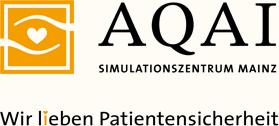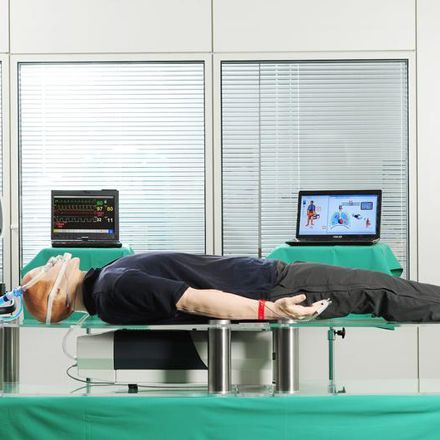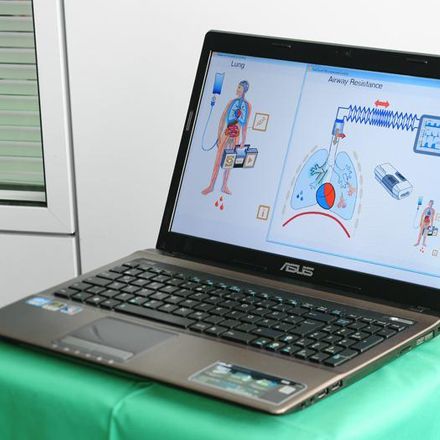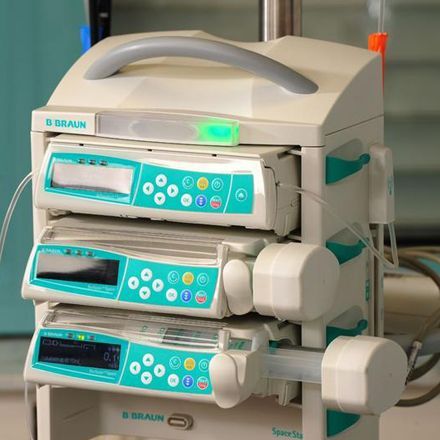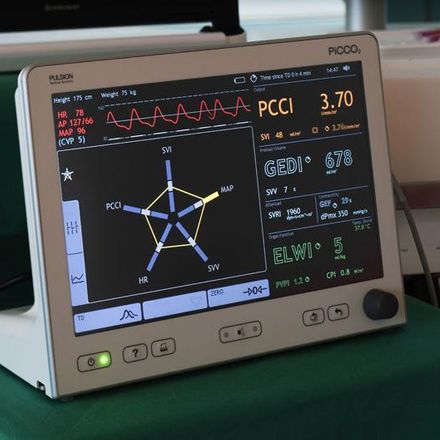Simulation Interface Software
Our goal is to make the simulation as realistic as possible. This is why we have developed a special software with integrated physiological and pharmacological models. SIS automatically connects to patient simulators and can read and manipulate their parameters. This highly complex simulation setup can be easily controlled by any instructor.
All modules in view
SIS is modular - modules can be used independently or in any combination to create the required functions, for achieving the desired goal.
For example, all modern syringe pumps can be read out and the applied medicines can be integrated into the models of the simulators. For the realization of trainings, which have the control of anesthesia, the software can determine the depth of the anesthesia in the model and display it via BIS™ monitoring. SIS can connect all modules variably with each other, that is, e.g. the lung simulator TestChest® and the PiCCO™ measurement into a common intensive medical learning module. As a result, complete diagnostic and therapeutic units of intensive care medicine are possible for the first time at the highest level of real-life.
- Simulators (Laerdal)
- TestChest®
- TIVA-TCI and BIS™ monitoring
- PiCCO™
- Blood gas analysis
Connection to simulators
AQAI SIS is a flexible software system for a wide range of interdisciplinary simulators. In a simulation in the heart catheter laboratory, for example, it synchronizes the heart rate of the heart catheter simulator with the physiological model of the patient simulator. Without this connection by the SIS, a synchronous representation would not be possible.
You want to implement a combination of full-scale simulator and TestChest®? With SIS no problem, because it combines both: precise mechanical and physiological characteristics of the TestChest® with patient simulators. With this combination, an advanced simulation can be carried out in artificial respiration and intensive care, which is not possible on the basis of today's simulators.
ASISIS
ASISIS is the graphical user interface to SIS. ASISIS uses a web server on the SIS PC to control the patient parameters from a "touch and feel" surface. ASISIS can be fully utilized on all popular tablet PCs, iPads or smartphones without additional software installation. Simple graphical icons guide the user to the individual parameters (a touch of the heart, for example, opens parameters such as frequency, preload, afterload, inotropy). ASISIS has an integrated scenarios player so that all scenarios of the learning modules or self-developed scenarios can be controlled with a small tablet in the hand. Thus, the instructor can concentrate entirely on the learner and is not bound by the control of many individual parameters.
BIS™ and IV pumps
The depth of anesthesia shows the narcotic effect of anesthetics on the central nervous system. The BIS™ monitor measures these effects clinically as an index between 100 and 0. The SIS model analyzes all relevant drugs for anesthesia, calculates drug-metabolic effects, and generates a simulated BIS™ index. AQAI SIS communicates with all modern injection pumps and IV systems. With the pump interface and the depth of the anesthesia model, the trainee can perform real anesthesia.
PiCCO™
PiCCO™ is a tool for advanced hemodynamic monitoring. It uses transpulmonary thermodilution and pulse contamination analysis to derive various parameters of the cardiovascular system. AQAI SIS models all relevant hemodynamic findings on the basis of actual patient findings. The communication with the PiCCO™ monitor allows all regular user interactions on the monitor.
Read all data
The basic SIS module combines with full-scale simulators and gets to write and read control over all the factors and parameters transferred. Various inputs are linked to different outputs via configurable transfer functions. This technology realizes all kinds of functions from linear to non-linear relationships. If the need arises, SIS adds physiological and pharmacological models to the actual simulation situation.
